
Website owner: James Miller
TRIGONOMETRY: FORMULAS, IDENTITIES, SOLUTION OF TRIANGLES

Trigonometric functions of an acute angle. The basic definitions of the various trigonometric functions are given in terms of the acute angles of a right triangle. See Fig. 1. Shown is a right triangle in which C is the right angle, the side opposite being the hypotenuse c. In terms of this right triangle of Fig. 1 the definitions are as follows:

Trigonometric functions of complementary angles. The acute angles A and B of the right triangle ABC are complementary, that is A + B = 90o. From Fig. 1 we have

These relations associate the functions in pairs — sine and cosine, tangent and cotangent, secant and cosecant — each function of a pair being called the cofunction of the other. Thus, any function of an acute angle is equal to the corresponding cofunction of the complementary angle.
Trigonometric functions of a general angle. In the above definitions, the trigonometric functions are only defined for angles between 0o and 90o. For angles outside this range they are undefined. Using the above definition, the concepts make no sense for angles outside this range. In many of the applications of trigonometry we need to know the functions of angles greater than 90o, as in the solution of oblique triangles. Angles up to 360o are employed in navigation and surveying. The applications of trigonometric concepts are broad and diverse, cropping up in many fields, and both positive and negative angles of arbitrary size are typically encountered. For functions appearing in equations it is highly desirable that the function be defined for all values of the independent variable, not just some small range of values — and trigonometric functions frequently appear in equations. As a consequence the definition of the trigonometric functions has been broadened in such a way as to define meanings for the functions for all angles, not just the angles between 0o and 90o. The broadened definition utilizes the rectangular coordinate system shown in Fig. 2. Let P(x, y) be a point on a circle of radius r and let θ be the angle measured counterclockwise from the positive x axis to line OP. Then the trigonometric functions are defined as follows:

![]()
![]()
![]()
The coordinate system is divided into four quadrants — quadrants I, II, III, and IV --- as shown in the figure. The values of x are positive to the right of the origin and negative to the left of it, as usual, and the values of y are positive above the origin and negative below it. The signs of the functions change from quadrant to quadrant, depending on the signs of the x and y coordinates of point P. The angle θ can be either positive or negative, with the counterclockwise direction considered as positive, and is generally measured in either degrees or radians. Angles can be of any size — point P can make multiple trips around the origin.
It will be noted that for angles in the first quadrant the functions have the same values as in the previous definition.
Reciprocal relations. An immediate consequence of the definitions above are the following reciprocal relations:
sin θ = 1/csc θ tan θ = 1/cot θ sec θ =1/cosθ
cos θ = 1/sec θ cot θ = 1/tan θ csc θ = 1/sinθ
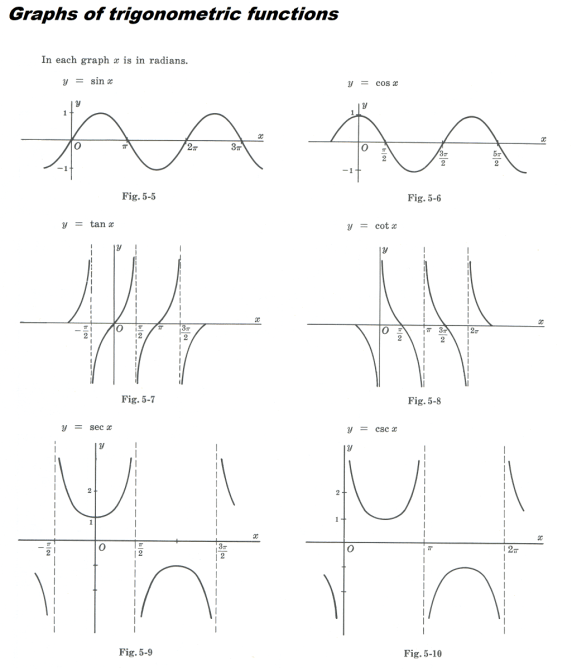
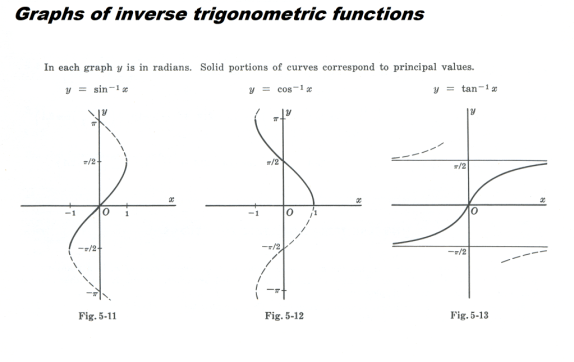
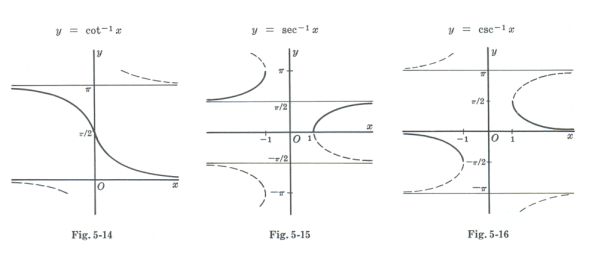
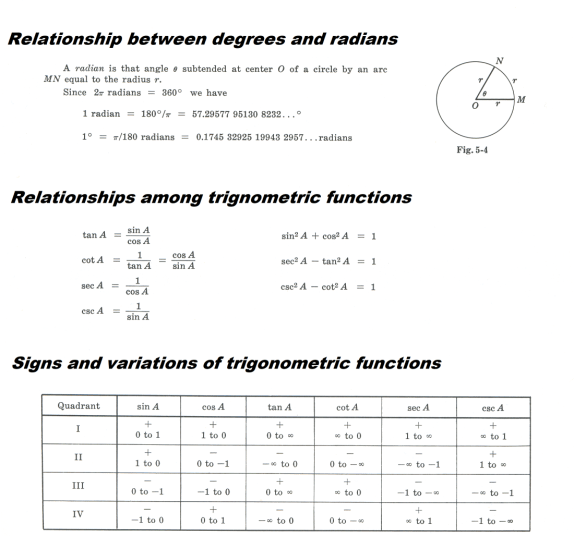
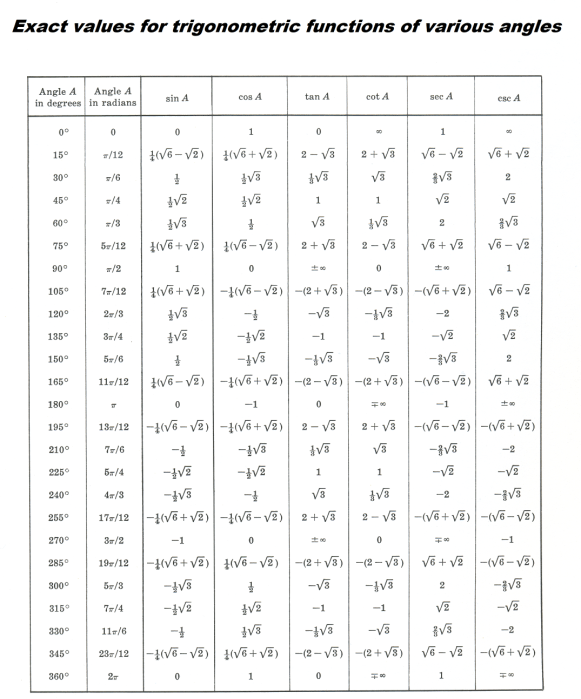
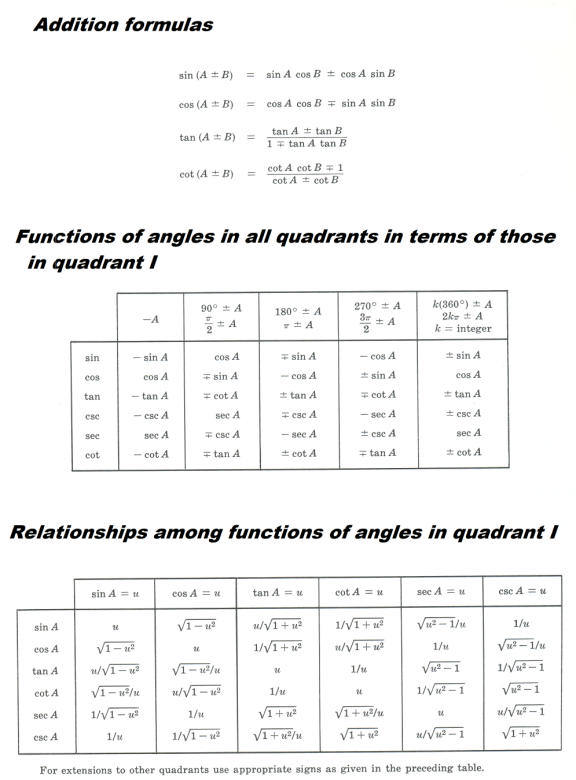

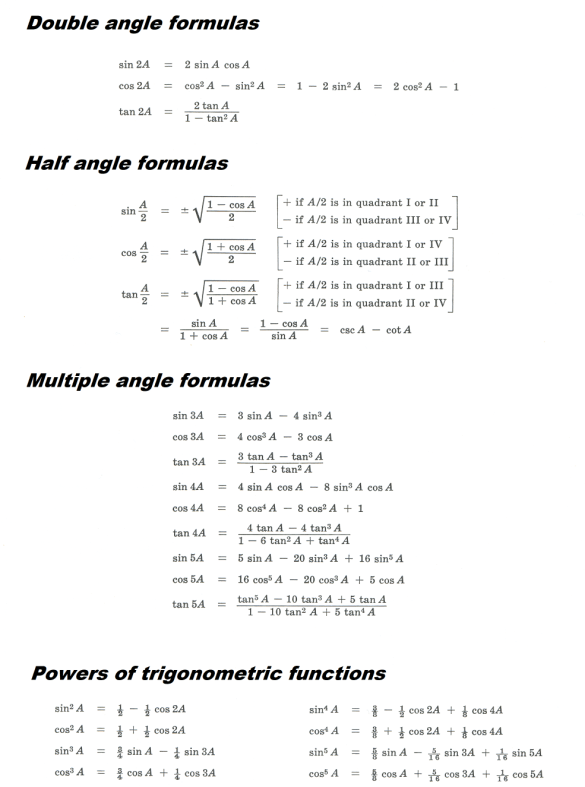
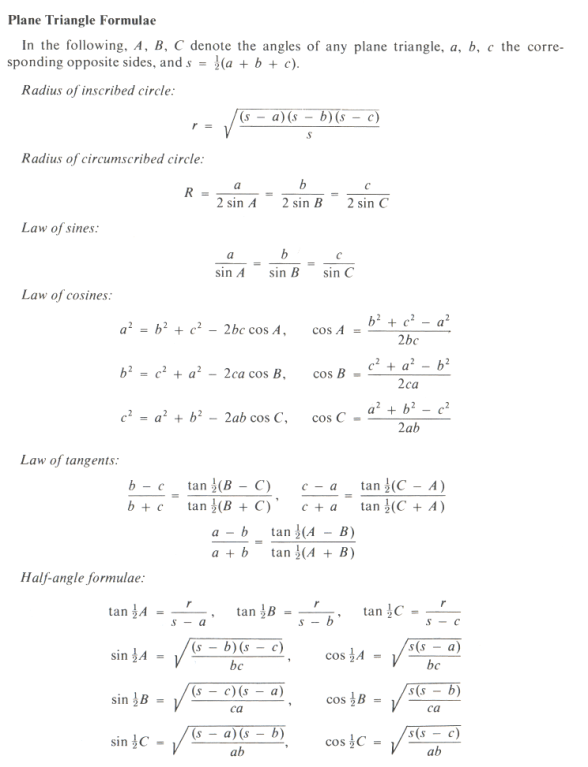
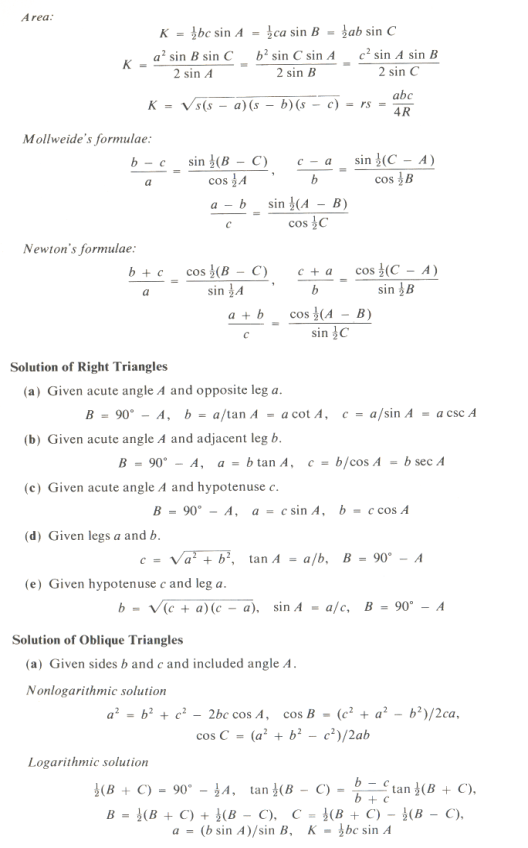
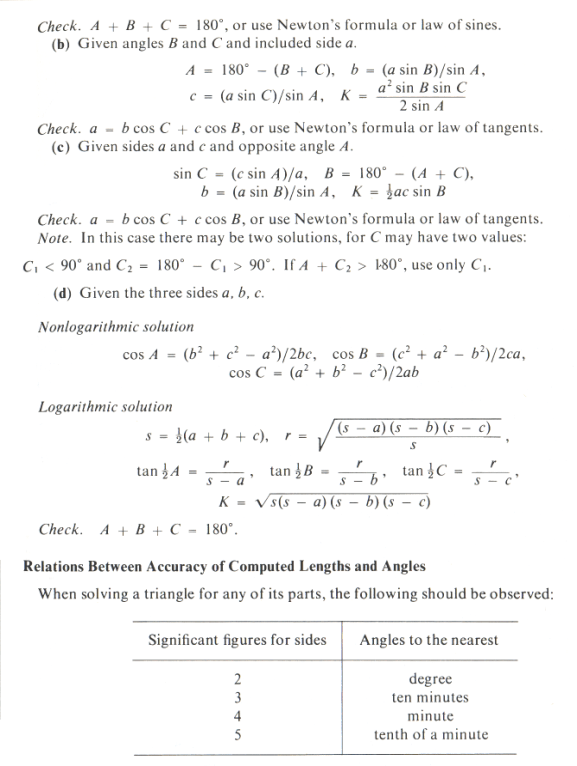
_____________________________________________________________________________
References.
Spiegel. Mathematical Handbook of Formulas and Tables. pp. 12 -17
CRC Standard Mathematical Tables. pp. 159 - 161
Ayres. Trigonometry. (Schaum)
Jesus Christ and His Teachings
Way of enlightenment, wisdom, and understanding
America, a corrupt, depraved, shameless country
On integrity and the lack of it
The test of a person's Christianity is what he is
Ninety five percent of the problems that most people have come from personal foolishness
Liberalism, socialism and the modern welfare state
The desire to harm, a motivation for conduct
On Self-sufficient Country Living, Homesteading
Topically Arranged Proverbs, Precepts, Quotations. Common Sayings. Poor Richard's Almanac.
Theory on the Formation of Character
People are like radio tuners --- they pick out and listen to one wavelength and ignore the rest
Cause of Character Traits --- According to Aristotle
We are what we eat --- living under the discipline of a diet
Avoiding problems and trouble in life
Role of habit in formation of character
Personal attributes of the true Christian
What determines a person's character?
Love of God and love of virtue are closely united
Intellectual disparities among people and the power in good habits
Tools of Satan. Tactics and Tricks used by the Devil.
The Natural Way -- The Unnatural Way
Wisdom, Reason and Virtue are closely related
Knowledge is one thing, wisdom is another
My views on Christianity in America
The most important thing in life is understanding
We are all examples --- for good or for bad
Television --- spiritual poison
The Prime Mover that decides "What We Are"
Where do our outlooks, attitudes and values come from?
Sin is serious business. The punishment for it is real. Hell is real.
Self-imposed discipline and regimentation
Achieving happiness in life --- a matter of the right strategies
Self-control, self-restraint, self-discipline basic to so much in life